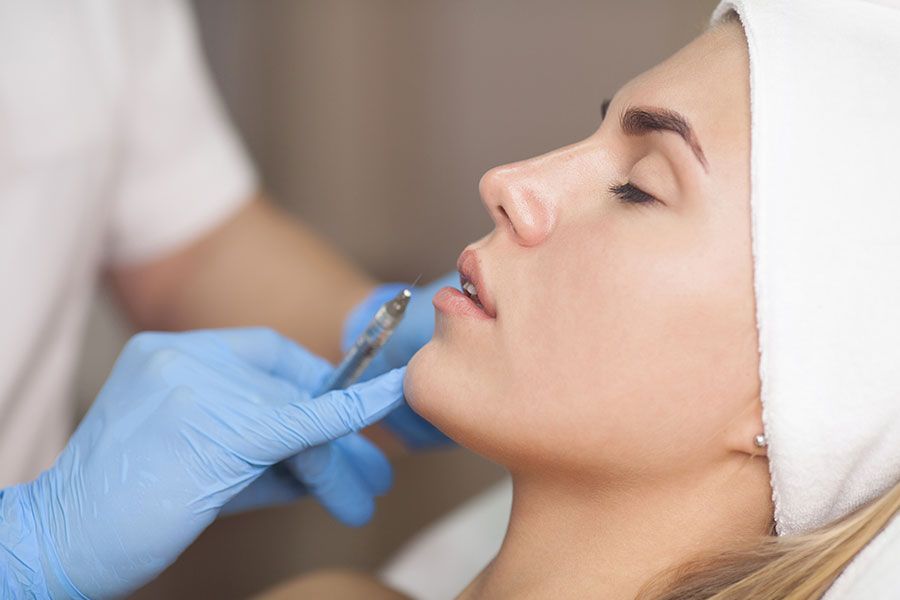
It’s normal for men to have a small amount of breast tissue. However, as many as 50% of men will experience breast tissue growth during their lifetime – a condition called gynecomastia. In most cases, this breast tissue shrinks by itself, but for some men, the appearance of what are known as ‘male breasts’ is a source of self-consciousness or embarrassment. Fortunately, there is gynecomastia surgery, a cosmetic surgical procedure that removes excess breast tissue.
Causes of gynecomastia
There are a variety of different factors that can cause a man to develop excess breast tissue. Two of the most common contributors to the condition include:
Hormone imbalances. Women are typically thought of as being the most affected by hormones, but the truth is that men are just as susceptible to hormone imbalances. When a man has excess female hormones present in his body, he is more likely to develop breast tissue. Gynecomastia is also common during puberty and in older age, which are times when hormone levels naturally fluctuate, and during times of weight gain. This is because people who gain weight generally have more of the estrogen hormone in their body, which is also the hormone principally responsible for breast growth.
Side effects of medications. Most medications have side effects, some which are more significant than others. Breast tissue growth is a side effect in a number of different drugs, including some which are prescribed for high blood pressure, heartburn and stomach ulcers. In many cases, the benefits of the medication generally outweigh the side effects, but if your excess breast tissue is making you unhappy, you may be able to move to another medication.
If your excess breast tissue does not resolve itself and you feel self-conscious about the appearance of your chest, you may want to consider gynecomastia surgery.

What is gynecomastia surgery?
Gynecomastia surgery, also known as a male breast reduction, is not too dissimilar to a female breast reduction. It is normally carried out using general anesthetic, although in some cases patients can remain awake with a combination of local anesthetic and sedation.
After the anesthetic is administered, an incision may be made around the areola, detaching it temporarily so that it can be replaced in a new and improved position. This is necessary if you are having a large amount of excess fat removed from the breast area. The main part of the procedure is carried out using liposuction. First, saline solution will be injected into the breast tissue to help break it up, which will make it easier to remove. A cannula is then inserted into the area through several, very small incisions. The cannula is a long, thin tube with a hole in the center, and it is attached to a vacuum that sucks out the excess breast tissue, depositing it into a container. Dr. Brent Faulkner will move the cannula back and forth to sculpt the chest area and give it greater definition. Once the process is complete, the cannula will be removed, the incision closed using sutures and, if necessary, the areolas replaced. In some instances, it may be necessary for some excess fat to be cut away too. Your body will then be wrapped in compression bandages.

Recovery after gynecomastia surgery
Gynecomastia surgery is a very straightforward procedure, but you will need to allow yourself a reasonable amount of time to heal and recover after. Your chest will feel tight beneath the bandages, and it will be swollen and uncomfortable. You’ll be prescribed painkiller to help you manage your discomfort during the early stages of healing.
Many patients will be allowed to return home the same day, but you will need someone else to drive you and stay with you. You will also be given comprehensive instructions to follow with regards to keeping your wounds clean, which is essential to minimize the risk of complications such as infection, and on wearing your compression bandages, which will likely need to be worn for up to 4 weeks depending on the rate at which you heal. You may need to schedule some time off of work and could be asked to avoid certain activities until you are fully healed – such as contact sports and swimming. It’s important that you follow the explicit advice of Dr. Faulkner and your cosmetic surgery team.
Click Here To Download The American Society Of Plastic Surgery Brochure
For more information about gynecomastia surgery and it’s benefits, or to schedule a consultation to see if you are a suitable candidate for this cosmetic surgery procedure, please get in touch with our knowledgeable team at Faulkner Plastic Surgery and Aesthetics in North Bethesda, MD today by calling (240) 802-8100.





